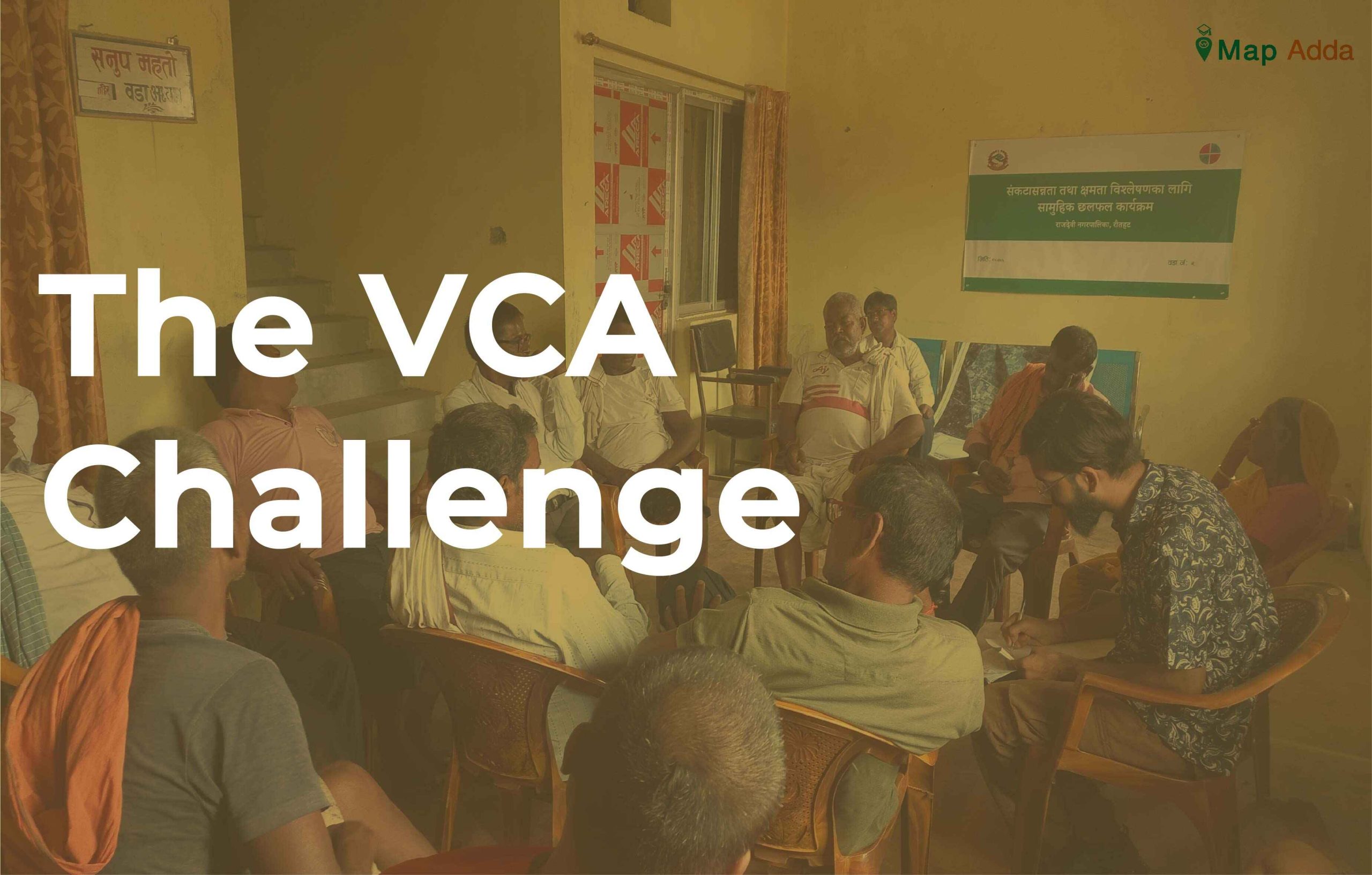I heard about VCA for the first time in Youth Innovation Lab’s climate fellowship project. Though its full form is Vulnerability and Capacity Analysis and it looked cool, its execution in the real field was a bit more challenging than what it looked like. It actually means to do an analysis of the vulnerability of a place to disaster and record existing capacity and resources to cope with it. On completion of VCA, one could know the major hazards of the place, its nature, its effect on the community, efforts to withstand it, available resources to resist it, and so on. It can act like a bridge to listen to people’s problems with the governmental bodies and also help to develop risk reduction and preparedness plans and policies based on local realities.
During my climate fellowship, I was stationed at Rajdevi Municipality, Rautahat, and had to conduct VCA in all nine wards of Rajdevi for the preparation of the local disaster climate resilience framework (LDCRF). There were 12 sections in VCA whose data had to be collected through a participatory approach from local people, and the rest of the data could be easily collected from the municipality. In the process of getting information from people, I had to pass through a lot of hurdles. People in the Madhesh region expect to get some incentives like snacks and ‘bhatta’ while attending certain programs. They literally don’t care about the importance of the program and have a focus on only ‘dheuwa,’ money. Even the ward president used to inquire about bhatta’ and they were sad knowing there are no such incentives. It was difficult for me to console people that my VCA program does not offer any incentives and it’s solely done to benefit them in the long term. However, I had made some arrangements for snacks with their favorite sweets packed in, which to some extent helped to recover their frustration.
Similarly, local language was also a huge barrier for the information exchange. I could not speak in Bhojpuri (but I can understand it well), and they could not understand Nepali (especially the women’s group). I was not happy with the female participants, as they were completely useless in my VCA; they didn’t give me any information and instead took my extra snacks, since they would also bring their children into the program. However, Mukhiya, the ward president and other male stakeholders could convey the information really well. The other obstacle that I faced was the time limitation. There was a lot of content in the VCA, and it would take almost four hours to complete the process, but engaging people throughout that time period was very challenging for me. Local people always used to be in a hurry since they also had to see to their agricultural work and feed cattle, so holding them for that long for discussion was a challenge. Similarly, ward presidents were also busy with their other programs, and only a few of them gave full time for the discussion. So, holding them to get all the required data for that timeframe was hard.

During the VCA, I realized that the success of VCA to some extent depends upon the support from Mukhiya. If he is educated and is a understandable person he would be on program time and would collect the mentioned people but if he is not interested then conducting program is very difficult. My fellow Bishal of Durga Bhagwati had to do a lot of hustle in gathering people, convince ward president and other process as Mukhiya were unsupportive however I didn’t had to go through those situations. During the VCA process, I had undergone through an identity crisis. One of the Mukhiya inquired me saying who are you? and insisted me to show my ID card (which I didn’t had). It was the first time someone had questioned me about my identity. Actually, I was not provided with any id card from Youth Innovation Lab and neither from Rajdevi Nagarpalika. However, I showed my placement letter in Rajdevi and other documents which settled him down. He was not in the mood in allowing us to conduct the program but I managed to convince him and conducted VCA but still he didn’t signed in the attendance sheet.
Similarly, mapping the disaster spot was another challenge to add upon. On showing upon the map people felt difficult to exactly locate the incident spot and give precise information. However, it also depended upon the audience type if there were teachers and other active stakeholders present they would easily show the spots while with other uneducated people it was difficult. Likewise, people had no complete remembrance about historical records of past incidents due to which we could not get complete information.
Mobility also had been one issue during the VCA. There were limited transportation services available and ward offices were at a great distance so reaching there was challenging with fewer means of transportation available. On the top of everything high temperature and heat waves had made the job more difficult. Overall, I really enjoyed doing VCA and loved it. Have you also conducted VCA before? What kind of challenges did you faced? Please let us know in the comment section.




